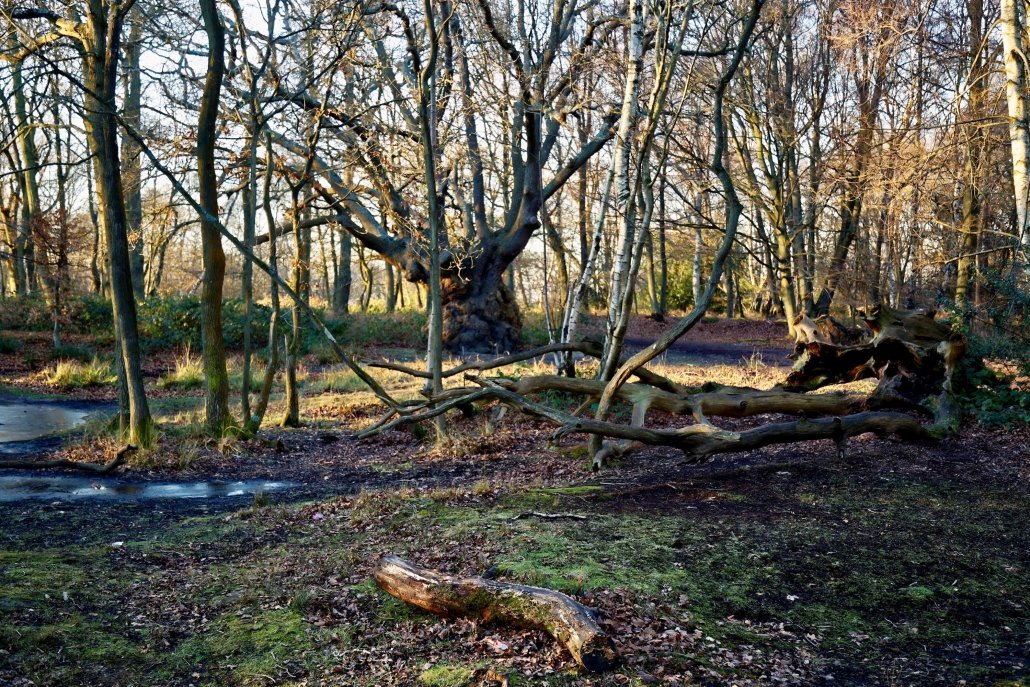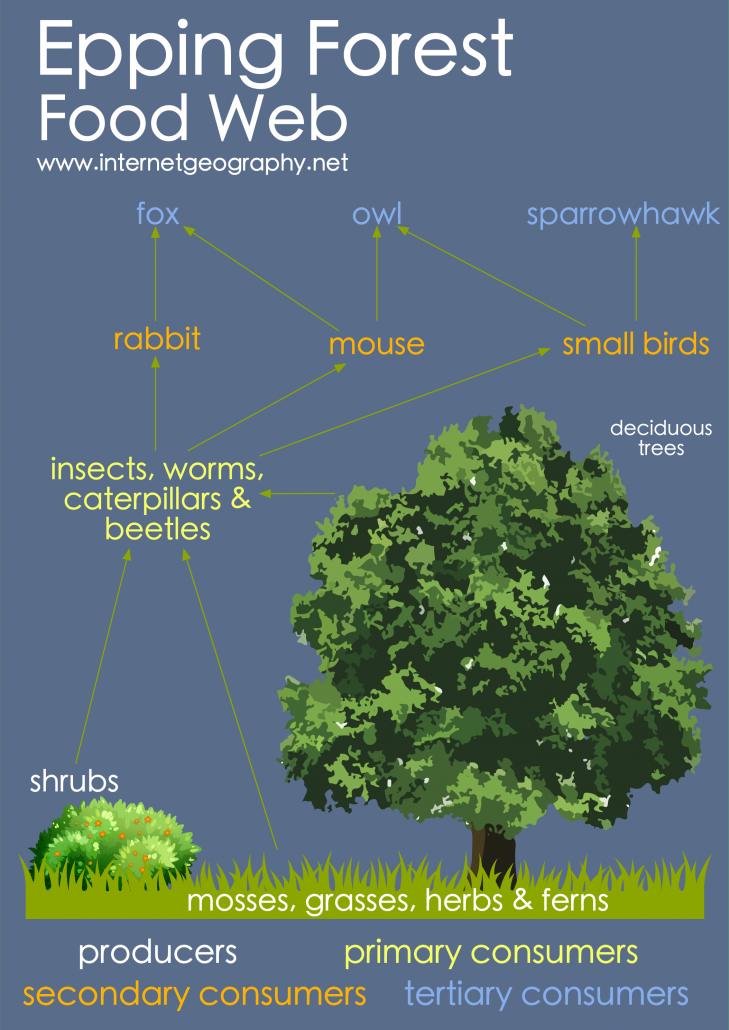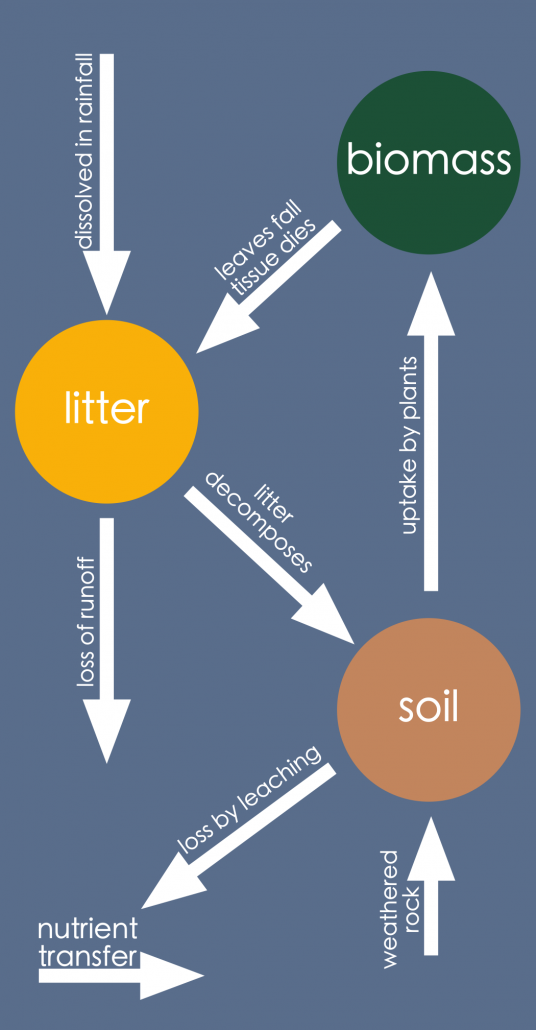Epping Forest Case Study
A small scale ecosystem
Epping forest is an ancient, deciduous woodland to the northeast of London. It is all that remains of a more extensive forest that colonised England at the end of the last ice age. The forest is approximately 19 kilometres (12 miles) long from north to south but no more than 4 kilometres (2.5 mi) from east to west at its widest point.
The forest, managed for over 1000 years, has been used for hunting and timber resources. Recreation is the leading role of the forest now.

Epping Forest
The forest is designated as a Site of Special Scientific Interest (SSSI), meaning it is a protected environment.
Due to its careful management, Epping Forest has a complex food web composed of thousands of species. The forest has:

Epping Forest Food Web

Epping Forest Nutrient Cycle
Recreation is controlled within the forest, including having designated car parking areas, a visitor centre, provision of rubbish bins and leaflets on how to use the forest to protect the environment. Paths for walking and riding are open to public use. There are currently nine Forest Keepers, three Senior Forest Keepers, and one Head Keeper employed to protect the forest environment. These strategies are sustainable because they protect the forest for future generations.
Along the roads, vegetation is cut back so that deer are aware of traffic and reduce the risk of motor vehicle collisions. Maintaining the foliage protects the native deer population from road traffic accidents. This is a form of sustainable management as it helps protect current and future deer populations.
Cattle have been reintroduced in some areas as grazing supports the growth of some flora.
Epping forest conservation volunteers undertake tasks every Sunday to support the biodiversity of the forest. Duties include cutting back vegetation, rubbish and scrub clearance, removing silt and maintaining ponds and bogs.
Ecosystems on a larger, global scale are known as biomes. Find out more here.
Use the images below to explore related GeoTopics.